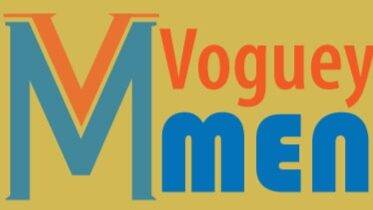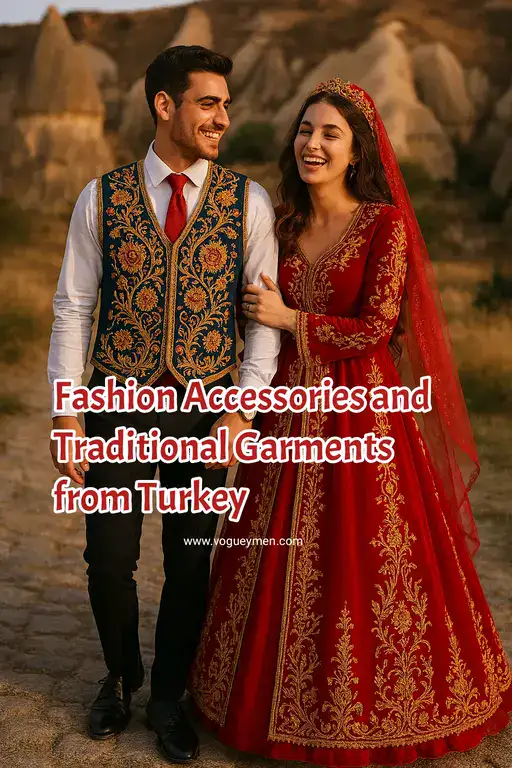Turkey, the country that straddles both Europe and Asia, holds a uniquely powerful presence in the world of fashion. Beyond its pristine Mediterranean beaches, ancient relics of Greek, Roman, and Ottoman times, and unforgettable hospitality, Turkey offers a captivating sartorial heritage. Fashion Accessories and Traditional Garments from Turkey reflect centuries of cultural blending—rich embroidery, flowing silhouettes, and symbolic motifs that make them truly one of a kind. Fashion here is not just attire but storytelling. Let’s begin our journey by exploring Turkish garments for men and women.
Traditional Turkish Garments: A Stylish Heritage
Bindallı
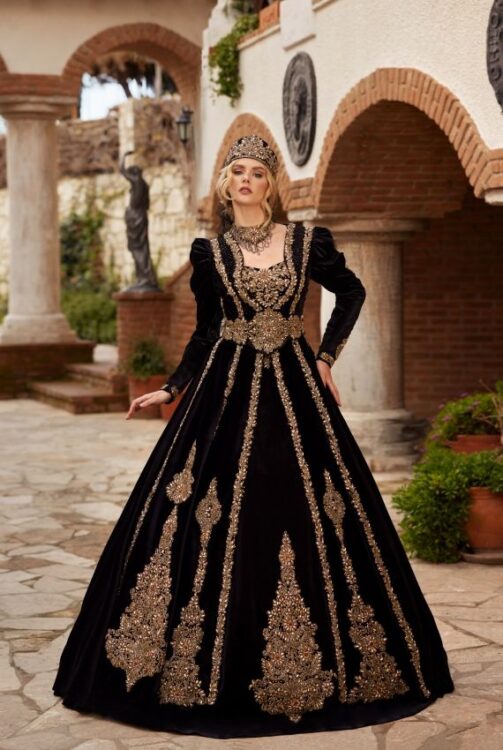
The bindallı is a long, velvet ceremonial dress traditionally worn by brides during the kına gecesi (henna night) and festive occasions. It is fitted in shape, often extending to the floor with slits revealing matching trousers and an inner blouse. The garment is richly adorned with heavy gold or silver embroidery depicting flowers and vines, symbolizing fertility and prosperity. Worn exclusively by women, the bindallı embodies Ottoman elegance and remains one of the most iconic expressions of Turkish bridal heritage.
Üç Etek (ooch eh-tek)
The üç etek is a women’s garment distinguished by its three separate skirt panels, from which its name derives (“üç” meaning three, “etek” meaning skirt). Traditionally made of richly woven or patterned fabric, it flows loosely to the ankles and is worn over undergarments, combined with a blouse and often a vest. Its layered design allows graceful movement in festivals and daily life. Embellished versions appear in ceremonial dress, making the üç etek one of Anatolia’s most historic women’s garments.
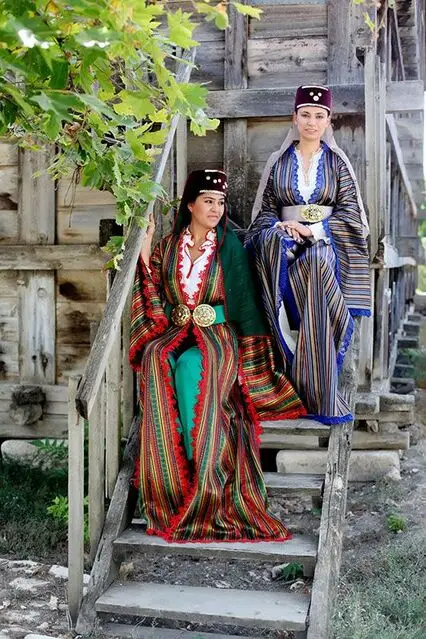
Modern Göynek
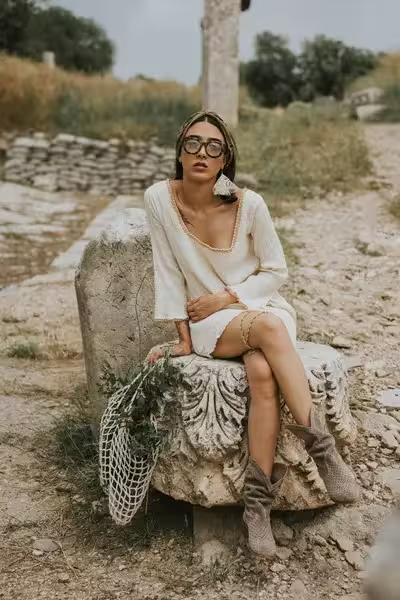
The göynek is a traditional Turkish garment for the upper body. It’s typically a loose-fitting, comfortable tunic with a simple, wide-cut shape. Historically an undergarment, it is now worn independently and is a versatile part of a person’s wardrobe. Though primarily associated with women’s attire, some traditional men’s clothing also includes similar tunic-like garments, making its historical usage somewhat unisex in form. The göynek is worn by simply slipping it on over the head, often without being tucked in, allowing its free-flowing shape to be on full display. image source
Wedding Çarşaf
The çarşaf is a modest two-piece cloak traditionally worn by women in more conservative Turkish regions, particularly during weddings and formal gatherings. Usually black, it consists of a loose, floor-length outer garment paired with a separate matching head covering. Unlike the Middle Eastern abaya, the çarşaf is distinct in cut and often allows a layered outfit underneath. While less common today, it still carries cultural weight as a symbol of piety and modesty within certain Turkish communities.
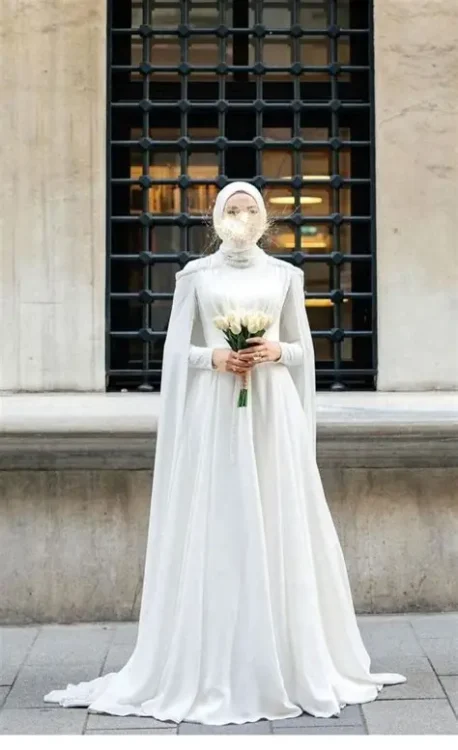
Traditional Yelek
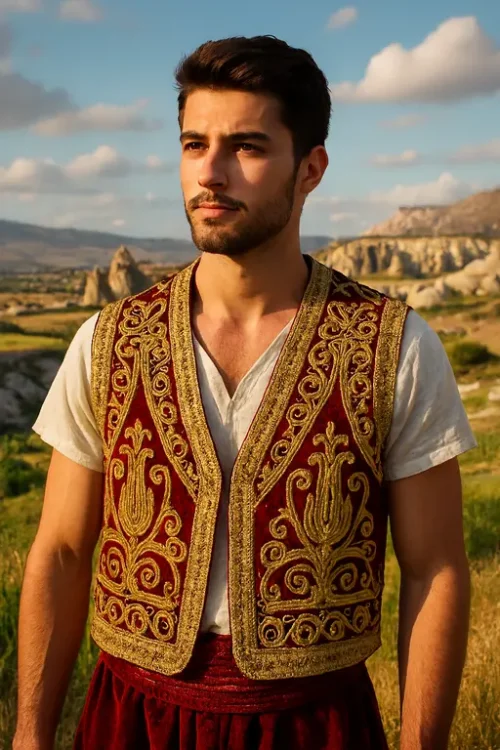
A yelek is a sleeveless vest forming part of both men’s and women’s Ottoman and Anatolian dress. Cut to the waist or hip, it is usually tailored from wool, cotton, or brocade, and richly decorated with embroidery, braids, or metallic thread. Worn over a shirt or blouse, it adds both structure and warmth to an outfit while also serving as an ornamental layer. In women’s ensembles it conveys refinement, while in men’s traditional wear it offers a dignified yet practical touch.
Şalvar (Turkish Harem Pants)
The şalvar (pronounced shaahl-vahr) are traditional, loose-fitting trousers that narrow at the ankles, worn by both men and women across Turkey. Made from cotton, silk, or linen, they allow ease of movement and ventilation in hot climates, while their gathered form provides comfort for agricultural and everyday tasks. In men’s ensembles they are often paired with a sash and vest, while women combine them with long tunics. Still worn in rural Anatolia, the şalvar remains a practical symbol of folk attire.
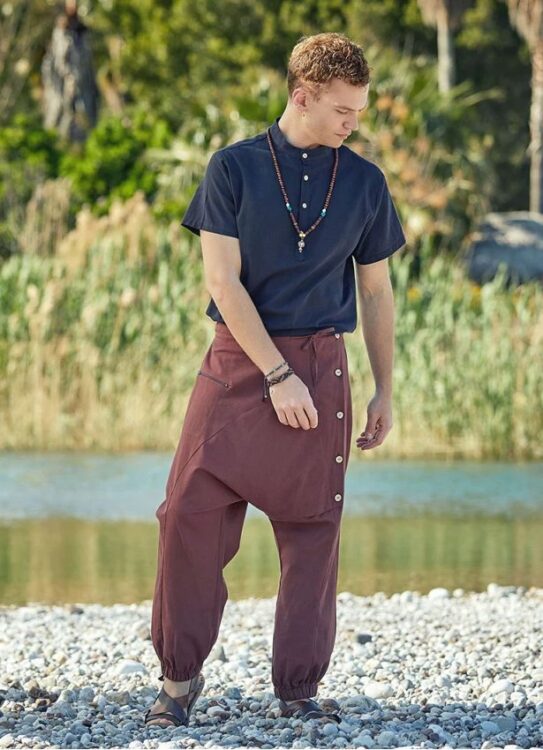
Pestemal-Inspired Loungewear
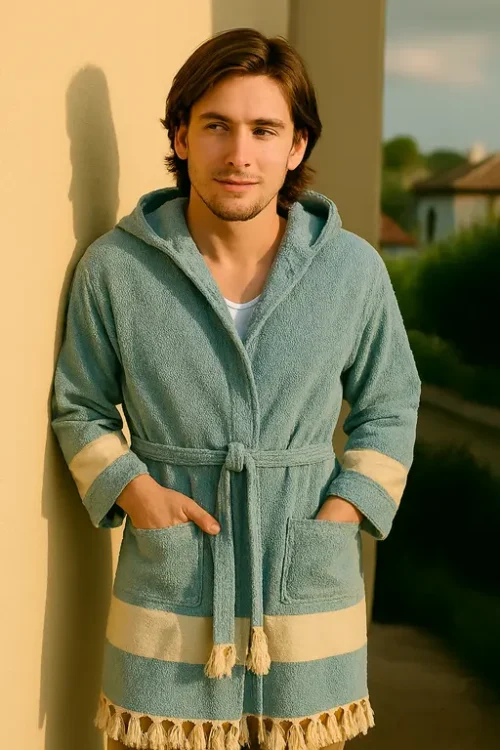
The pestemal is the traditional Turkish hammam towel, woven from lightweight cotton with characteristic stripes and fringed edges. Soft yet absorbent, it was historically used in bathhouses as a body wrap. Modern designers have adapted its fabric into loungewear such as robes, tunics, or pajama sets. These garments maintain the pestemal’s breathability while offering relaxed, stylish comfort at home or by the seaside. Typically unisex, pestemal-inspired loungewear fuses Ottoman bathing culture with contemporary leisure fashion, embodying ease and heritage simultaneously.
Iznik Print Shirts & Tees
These modern garments reinterpret traditional Turkish motifs into casual wear. Iznik print T-shirts use patterns inspired by Ottoman-era ceramics, with vivid blues, reds, and floral arabesques adorning soft cotton fabric. Kilim pattern shirts employ bold, geometric Anatolian rug designs, transforming textile heritage into contemporary streetwear. Typically unisex, both styles allow young Turks and visitors alike to carry cultural pride in a modern form. They blend comfort with artistic legacy, turning everyday clothing into wearable expressions of Turkish identity.
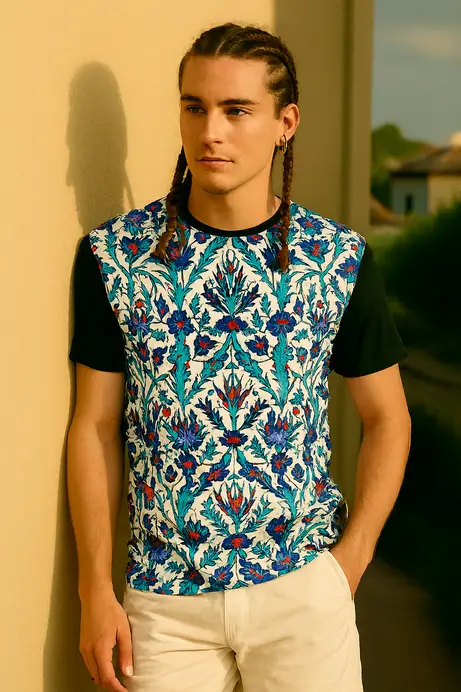
Zeybek Costume
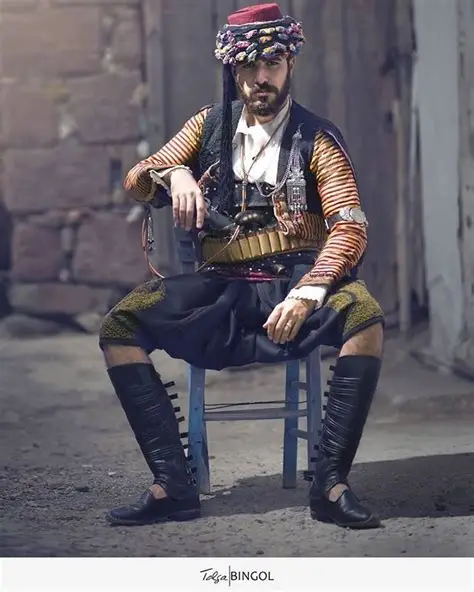
The Zeybek costume is a striking men’s ensemble worn during the traditional folk dances of western Turkey. It includes short, bolero-style jackets, high-waisted şalvar trousers, a richly embroidered vest, and a colorful sash tied at the waist. Distinctive headgear, such as a cloth wrapped around the head, completes the attire. Often decorated with regional motifs, the costume symbolizes courage and the independent spirit of the Aegean warriors. Still performed in ceremonies and festivals, the Zeybek costume is an enduring cultural emblem.
Kispet (Kisbet) Leather Pants
The kispet is a pair of heavy, hand-stitched leather pants worn exclusively by Turkish oil wrestlers (yağlı güreşçiler). Made from thick buffalo or calfskin, the trousers are tightly fitted from waist to knee, with wider, looser legs below for ease of grappling. Their durable construction withstands the strain of wrestling, where wrestlers, oiled with olive oil, use the garment itself for holds. Always worn shirtless, the kispet is both a symbol of strength and the defining attire of Turkey’s national sport.

Click the link to explore bold, versatile leather pants outfits that redefine modern menswear.
10 Turkish Fashion Accessories (And Footwear) Still Loved Today.
Evil Eye Bead (Nazar Boncuğu) Jewelry
The nazar boncuğu, or evil eye bead, is a deep-blue glass amulet believed to protect against envy and misfortune. Recognizable by its concentric eye-like design in blue, white, and black, it is handmade by artisans using traditional glass-blowing techniques. Worn by both men and women as jewelry—necklaces, bracelets, or keychains—or hung in homes, cars, and shops, the nazar boncuğu is among Turkey’s most universal symbols. It transcends fashion, serving as a spiritual and cultural safeguard woven into everyday life.
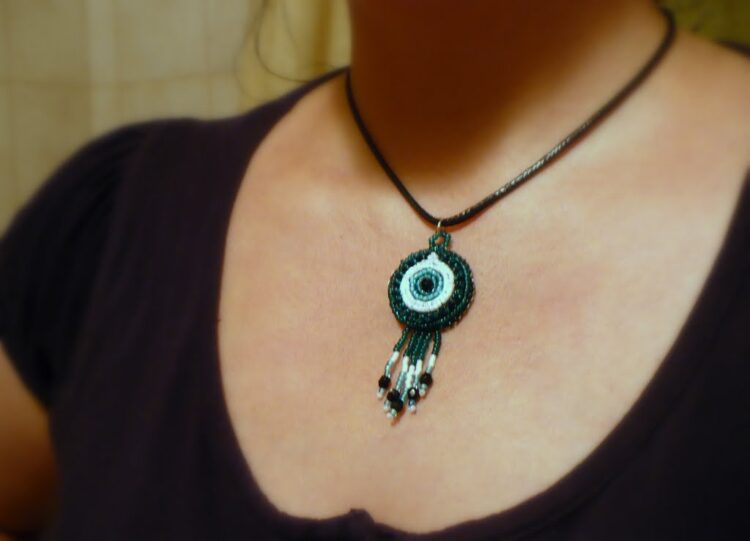
Oya Scarf
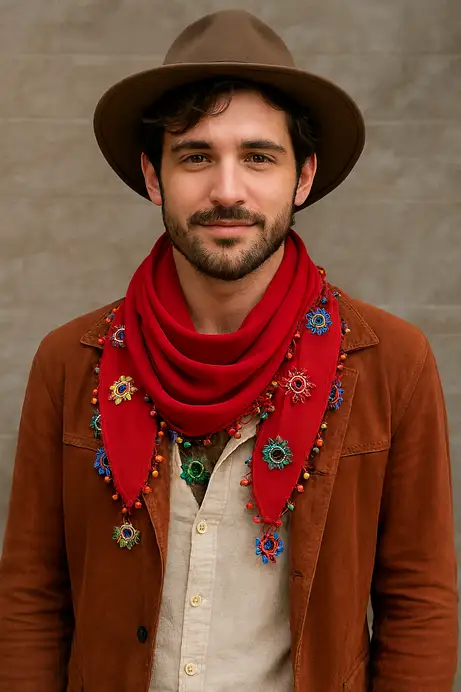
An oya scarf is a traditional Turkish headscarf adorned with intricate needle lace along its edges. Usually made of lightweight cotton or silk, the scarf itself provides coverage, while the oya edging—crafted from colorful threads—serves as both ornament and expression. Different motifs in the lace carry symbolic meanings, from love to protection, making each piece unique. Worn mainly by women, the oya scarf blends practicality with artistry, serving as both daily attire and a cultural emblem of feminine craftsmanship.
Çarık & Rustic-Inspired Boots (pronounced: chah-ruk)
The çarık is a type of handmade leather shoe traditionally worn by shepherds, villagers, and soldiers in Anatolia. Its construction resembles a moccasin: a single piece of leather gathered and stitched around the foot with laces. Designed for rough terrain, çarık were functional and durable. Today, their rustic, earthy aesthetic has inspired modern boho-style boots and sandals. Though originally unisex, they were most common in men’s rural attire. The çarık embodies Turkey’s heritage of resourceful, handcrafted footwear rooted in village life.
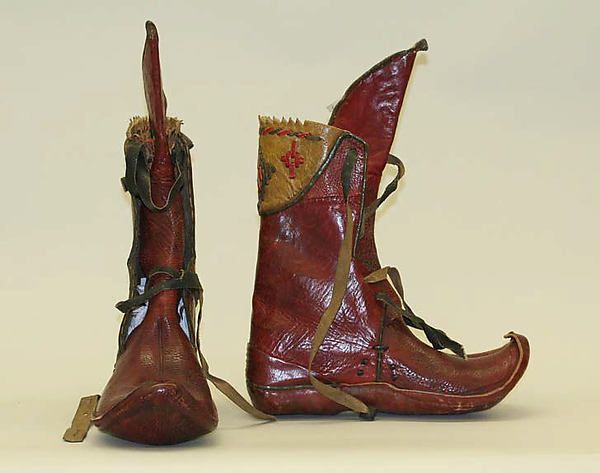
Oya Lace Accessories
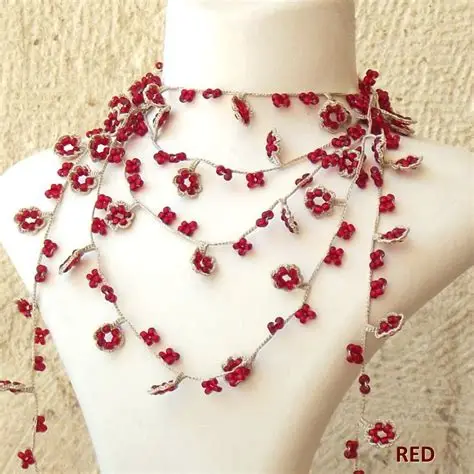
Oya lace, once reserved for edging women’s scarves, now adorns a range of modern accessories including earrings, necklaces, bracelets, and brooches. Created with delicate crochet or needle techniques, oya uses silk or cotton threads in vibrant colors to form miniature flowers, vines, or symbolic patterns. Each motif carries meaning, traditionally passed between women as silent messages. Now adapted into jewelry and fashion accents, oya lace transcends its folk origins to become a versatile craft, uniting heritage artistry with contemporary accessorizing.
Kilim Bags
Kilim bags are colorful, handcrafted accessories made from repurposed Turkish kilim rugs. Flat-woven from wool, kilims feature bold geometric designs and tribal motifs in earthy reds, indigos, and natural tones. Artisans cut and stitch these textiles into tote bags, satchels, clutches, and backpacks, often reinforced with leather trims. Unisex in style, they blend practical durability with bohemian aesthetics. Each bag carries fragments of Anatolian weaving tradition, transforming functional folk art into fashionable pieces that appeal to modern tastes worldwide.
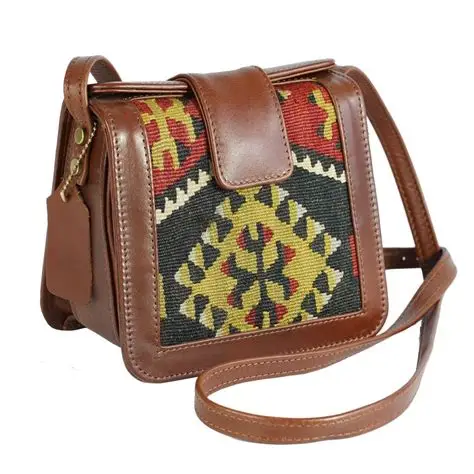
Patik (Knitted Slippers/Socks)
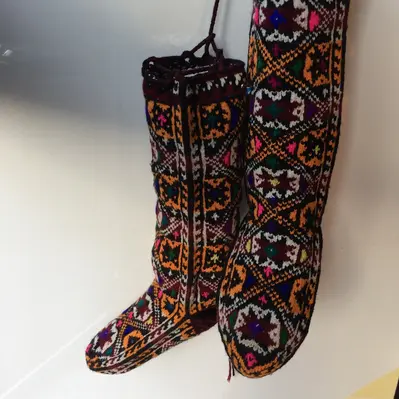
Patik are traditional knitted slippers that function as both socks and house shoes. Handmade by women in Anatolian villages, they are created from wool or cotton yarn and often decorated with colorful geometric or floral motifs. The construction is snug, wrapping the foot comfortably while providing warmth. Patik are especially popular as dowry items or family gifts, carrying symbolic designs tied to protection and prosperity. Worn indoors by both men and women, they remain beloved expressions of Turkish folk craftsmanship.
Bork Hat
The bork is a historical Ottoman headgear, most famously worn by elite Janissaries and sultans. Cylindrical in form and often taller than the fez, it was fashioned from felt or cloth, sometimes adorned with fur, embroidery, or a jewel at the front. The bork symbolized status, military identity, and loyalty, serving as more than just headwear. Though no longer in use, it survives in Ottoman miniatures and museum collections, reminding us of the elaborate sartorial codes of imperial Turkey.
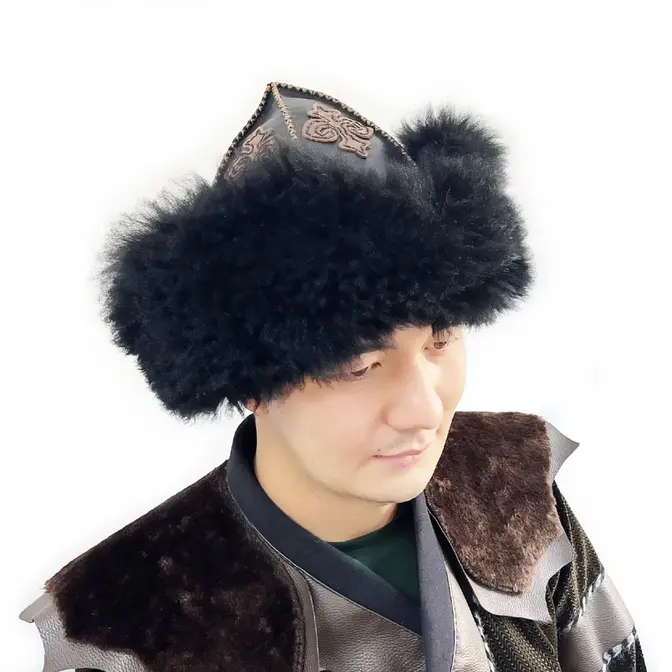
Kalpak Hat
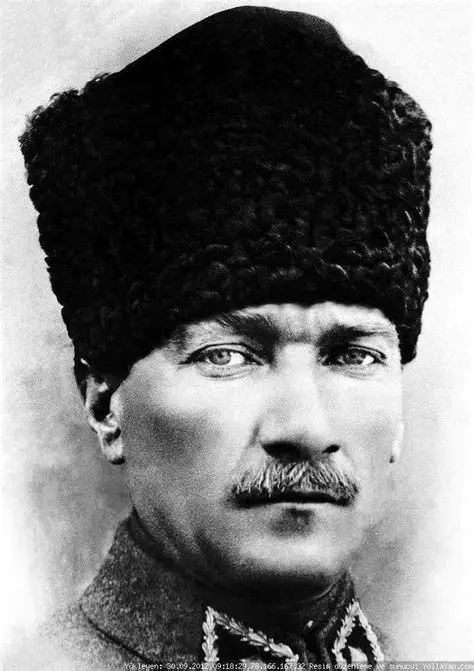
The kalpak is a high, cylindrical hat made of felt or sheepskin, historically worn across Central Asia and Anatolia. In Turkey, it became a symbol of modern identity when Mustafa Kemal Atatürk famously wore it during the early Republican period. Its structured form and simple black or gray appearance gave it a dignified presence in men’s attire. Though rarely seen today except in ceremonies or folkloric displays, the kalpak remains an enduring emblem of leadership, reform, and cultural continuity.
Sikke, The whirling Dervishes hat
The sikke is a tall, cylindrical hat made of felt or camel’s hair. It’s a key part of the ceremonial attire of the Mevlevi Order, worn by the whirling dervishes during the Sema ritual. The hat’s shape and material are not for fashion; they hold profound symbolic meaning. It represents the tombstone of the ego, signifying the dervish’s spiritual death to their earthly desires and their rebirth into a higher state of consciousness. It is a sacred part of their religious practice, not a mere accessory. image source
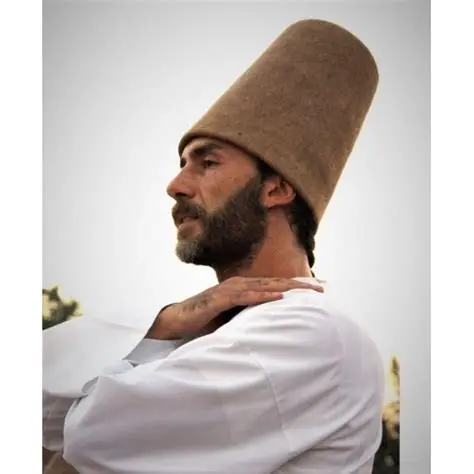
The Fez hat
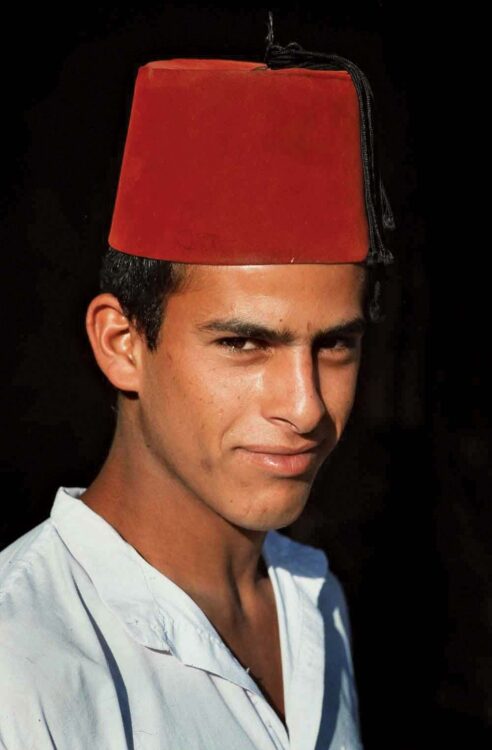
The fez (fes in Turkish) is the iconic brimless red hat topped with a black silk tassel, once widely worn across the Ottoman Empire. Typically made from wool felt, its cylindrical shape is distinctive, practical, and deeply symbolic of Ottoman identity. Though banned in the early Turkish Republic as part of modernizing reforms, it remains a powerful cultural symbol seen in ceremonies, folk performances, and historical reenactments. The fez was primarily worn by men, representing dignity, tradition, and Ottoman-era cosmopolitan style.
Turkish fashion is a living dialogue between past and present—where ornate Ottoman garments, folk handicrafts, and protective amulets still inspire modern design. From the intricate stitches of oya lace to the bold patterns of kilim prints, every piece carries a story of heritage, artistry, and resilience. In wearing or even admiring them, one connects not only with style, but with centuries of culture woven into fabric, metal, and thread—a reminder that fashion, in Turkey, is truly history made wearable.
